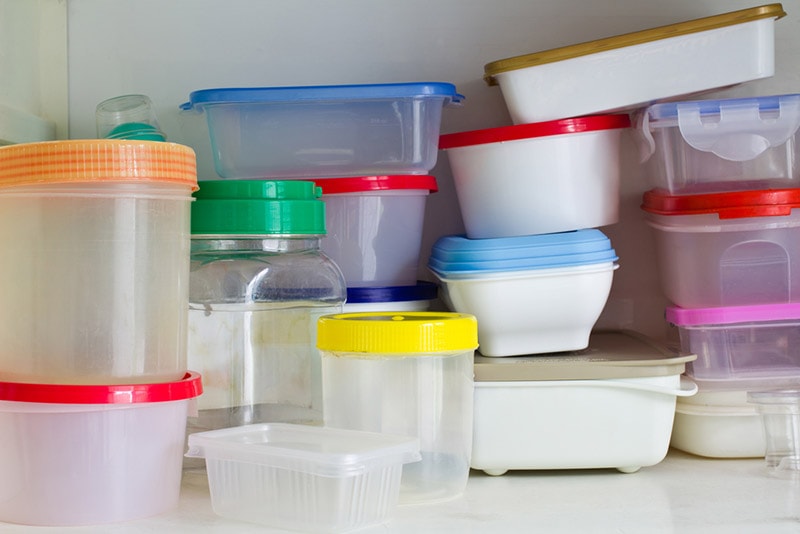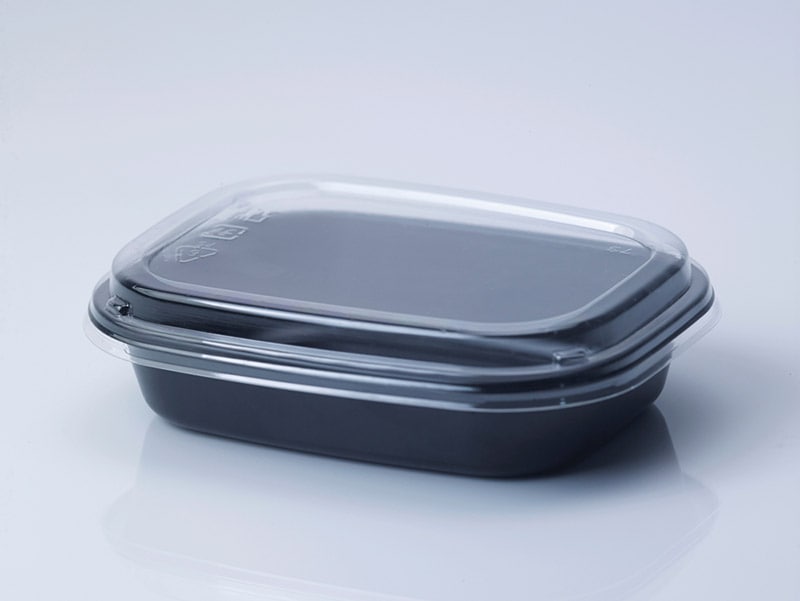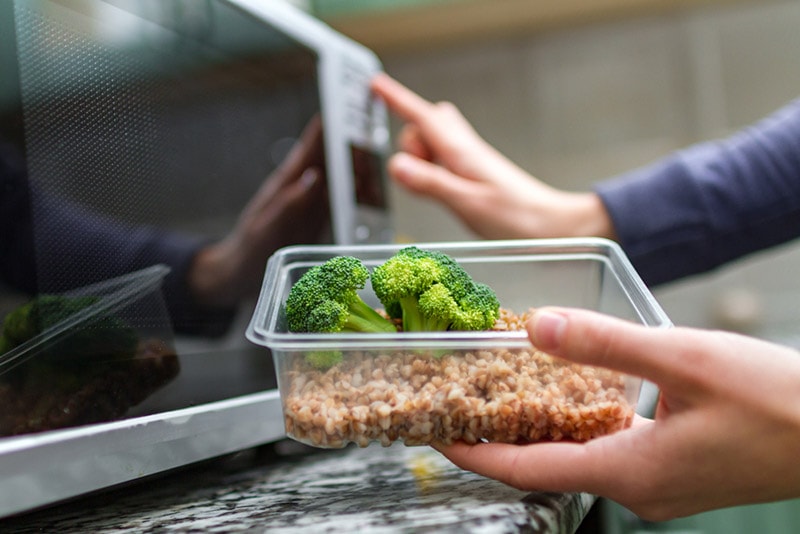Can You Microwave Plastic? (Microwave Safety Tips)
-
Pete Ortiz
- Last updated:

According to the Bureau of Labor Statistics, approximately 90% of households1 in the US own at least one microwave, making them a home staple. These nifty devices are incredibly convenient, helping us heat up cold food in less than two minutes. They’re also great for cooking food, disinfecting items, and heating some beauty products. But despite their utility, microwaves also have their caveats.
For instance, you cannot microwave copper, steel, aluminum, or other metals. The good news is that most utensils are made of glass or ceramic, which are both microwave friendly. But what about their polyethylene counterparts? There’s been a lot of debate on the microwave-friendliness of plastics and whether plastics fit in the same category as glass and ceramics. This begs the question: can you microwave plastics? Does plastic melt in the microwave?
Well, yes and no, depending on a couple of factors. Keep reading to find out all you need to know about microwaving plastics safely. Grab your pen and notebook, and let’s dive straight in.
Topics covered in this article:
- What Are the Different Types of Plastics?
- Is Plastic Microwave-Safe? Does Plastic Melt in the Microwave?
- To Microwave or Not to Microwave Plastics?
- How to Safely Microwave Food in Plastic
- Alternatives to Microwaving Plastics
What Are the Different Types of Plastics?
Plastic is mostly derived from natural oils and natural gasses, but it can also derive from wood and cotton linter. Plastics are a product of polymerization, which occurs when molecules known as monomers bind together to form large molecule chains known as polymers. The results of this polymerization are different types of plastic, namely:
High-Density Polyethylene (HDPE): This type of plastic makes most plastic containers, including the plastic we see on butter, detergent, and liquid soap containers
Polyvinyl Chloride (PVC): Think along the lines of plumbing pipes, medical tubing, and synthetic leather. PVC is very dense and also has greater variation in terms of the compounds it contains.
Polypropylene (PP): This is plastic that makes food storage containers, baby bottles, yogurt tubs, and bottle caps
Polyethylene Terephthalate (PET): This plastic makes peanut butter jars, cooking oil containers, and water bottles. It’s a sturdy but thin and lightweight plastic.
Low-Density Polyethylene (LDPE): This type of plastic has immense uses but is also very detrimental to the environment. It’s the plastic that makes food packaging (potato chips, cookies), plastic bags, and plastic parts for computers.
Styrofoam or Polystyrene: This plastic is used to make reusable containers for food and paper plates and cups.
There are other plastics like acrylic, styrene, and fiberglass, but these are less popular. Plastics vary depending on their chemical composition and density. Color is not a differentiating factor for plastics.

Is Plastic Microwave-Safe? Does Plastic Melt in the Microwave?
It’s highly unlikely that your plastic plate or food container will melt or warp because of the heat from the microwave. In the case of fatty foods, such as cheese, the extreme heat may cause some warping, but nothing too serious. What’s more, plastic is chemically inert, meaning it will not react with food even when exposed to high temperatures.
The main issue with microwaving plastic is the chemicals it contains. Aside from the polymer chains, plastics also contain additives like colorants, stabilizers, and reinforcements. Under high heat, these additives may leach into your food and lead to health problems. Chemicals like BPA found in plastic are incredibly detrimental to women, affecting the prostate glands and brains of fetuses. It’s also been linked to high blood pressure, diabetes, and cardiovascular issues.
Phthalates, or plasticizers, are another harmful chemical found in plastics that can leach into your food. Exposure to phthalates may lead to insulin resistance, type 2 diabetes, and a host of reproductive problems in both men and women. As these health effects become more apparent, plastic manufacturers have moved to create BPA- and phthalate-free plastics for food packaging and plumbing systems.
To Microwave or Not to Microwave Plastics?
Given the information above, microwaving plastic seems pretty scary. You have good reason to be worried, but it’s not all gloom and doom. Some plastics are perfectly safe for the microwave; you just have to know which ones they are. Let’s take a brief look at Styrofoam, for starters.

What Is Styrofoam?
Styrofoam is used for paper plates and cups, popular with restaurants, fast-food joints, and college students. Styrofoam is a type of plastic that contains styrene, which is also used to make latex gloves, paint, and coatings, besides paper plates.
It’s very easy to plop a Styrofoam plate full of food into the microwave to heat it up. But did you know that this isn’t always safe to do? Several studies have linked styrene to certain types of cancer. Thankfully, the FDA has stepped in to regulate the manufacture of polystyrene used to package or hold food. Therefore, you can microwave polystyrene cups and plates provided they have the “microwave-safe” label. It is not advisable to microwave food in a Styrofoam container without this label.
How to Tell Which Plastics Are Microwave-Safe
Aside from the “microwave-safe” label, there are other indicators that plastic is microwave-safe. All plastics are labeled 1 through 7. These numbers indicate the type of plastic and how recyclable it is.
Plastics labeled “5” are the safest to use on microwaves. Number 5 indicates propylene, which is heat resistant and will not warp or scratch when exposed to heat. Avoid microwaving plastic numbers “3,” “6,” and “7.” These are polyvinyl chloride, polystyrene, and polycarbonate, or LEXAN, respectively. Only microwave the said plastics if they have the “microwave safe” label.

How to Safely Microwave Food in Plastic
Microwaving plastic is still safe, provided you do it cautiously. Here are a couple of tips for safely microwaving food in plastic.
Look for the “Microwave-Safe” Label
If you’re microwaving Styrofoam, ensure it has the “microwave-safe” label. As mentioned earlier, this label is the FDA’s stamp of approval for microwave-friendly plastics. If it has a label, microwave it.
Avoid Plastics With Cracks or Scratches
The presence of cracks or scratches on plastic containers is a bad sign. These make it easier for additives and other harmful chemicals to leach into your food. If the plastic has cracks or scratches, get rid of it ASAP.
Ensure Ventilation in Plastic Containers
Most restaurants package their food in airtight plastic containers for freshness and heat retention. When airtight plastic containers are heated in the microwave, they expand, and pressure builds up, potentially causing the packaging to crack. This cracking exacerbates the leaching of these harmful chemicals into your food. As such, it’s vital to vent airtight plastic containers to avoid any cracking.

Alternatives to Microwaving Plastics
While microwaving plastics isn’t completely dangerous, high-risk groups like pregnant women and people with kids may be unwilling to take the risk. Thankfully, there are a couple of alternatives to microwaving plastics. They include:
Use the Oven Instead
Microwaves work by heating the water and fat molecules found in food. Heating very fatty foods in your microwave could produce too much heat that may melt, warp, or crack the plastic containers. Ovens work much better since you can comfortably control the heat and prevent cracking or melting.
Use Glass or Ceramic
Before heating, you could always transfer the food to a glass or ceramic container. That way, you can ensure your food is 100% safe to eat after microwaving. It takes less than a minute to do so, but it could save your life.
Carefully Remove the Container
After microwaving your food, ensure you carefully remove it. Wear mittens or use a cloth to remove your food gently. That way, you can avoid serious microwave burns.
Final Thoughts
Both plastics and microwaves are necessities for most households in the US. However, they don’t make the greatest combination, especially when heating food for kids and pregnant women. The best move would be not to use plastics with your microwave, but if you absolutely can’t, remember to do so cautiously. Also, invest in a high-quality microwave to heat your food more evenly and avoid excessive heating that could melt your plastic containers.
See also: Is Rubbermaid Microwave-Safe? (Microwave Safety Tips)
Featured Image Credit: patpitchaya, Shutterstock
Contents


